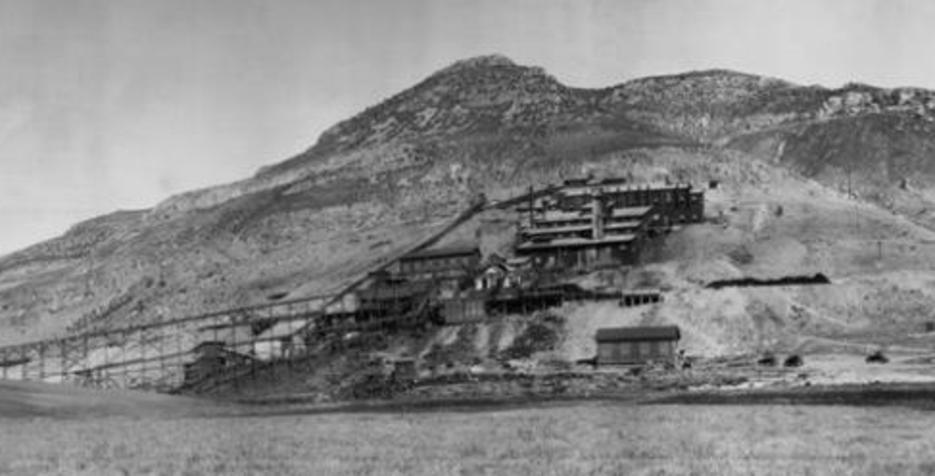The Tintic Standard Mining Company was established by Emil J. Raddatz in October of 1907. The Tintic Standard Reduction Mill was built by the Tintic Mining Company in 1921 at a cost of $580,000 so they could process ore. Silver, copper, lead and gold were processed at the Mill, which was designed and built by W.C. Madge with input from Theodore P. Holt and George C. Dern.
The smelting process employed by the plant was an acid based process known as the “Augustin Process" which was obsolete before the plant opened, so the life of the mill was short. Only able to process approximately half the ore that was brought from the mines each day, the mining company eventually sent their ore to a third party smelter for processing. The mill closed in 1925, less than five years after becoming operational.
Time has reduced the mill to a ruin, an interesting canvas for graffiti artists. Some of the structures, the wooden buildings that enclosed the mill, have completely collapsed; what remains standing is slowly crumbling. Most of the concrete surfaces are spalled by the oxidizing rebar and freeze/thaw cycles of the northern Utah climate. Any relatively smooth surface that remains is covered in graffiti.
The graffiti continues to change with each summer season. The B&W photo of the buildings at bottom is what originally encased all this concrete. Modern rock art is now replicating and replacing what the ancients once carved into or painted onto canyon walls?
TINTIC REDUCTION MILL, GENOLA, UTAH
Copyright © 2017 by Raymond Cannefax
